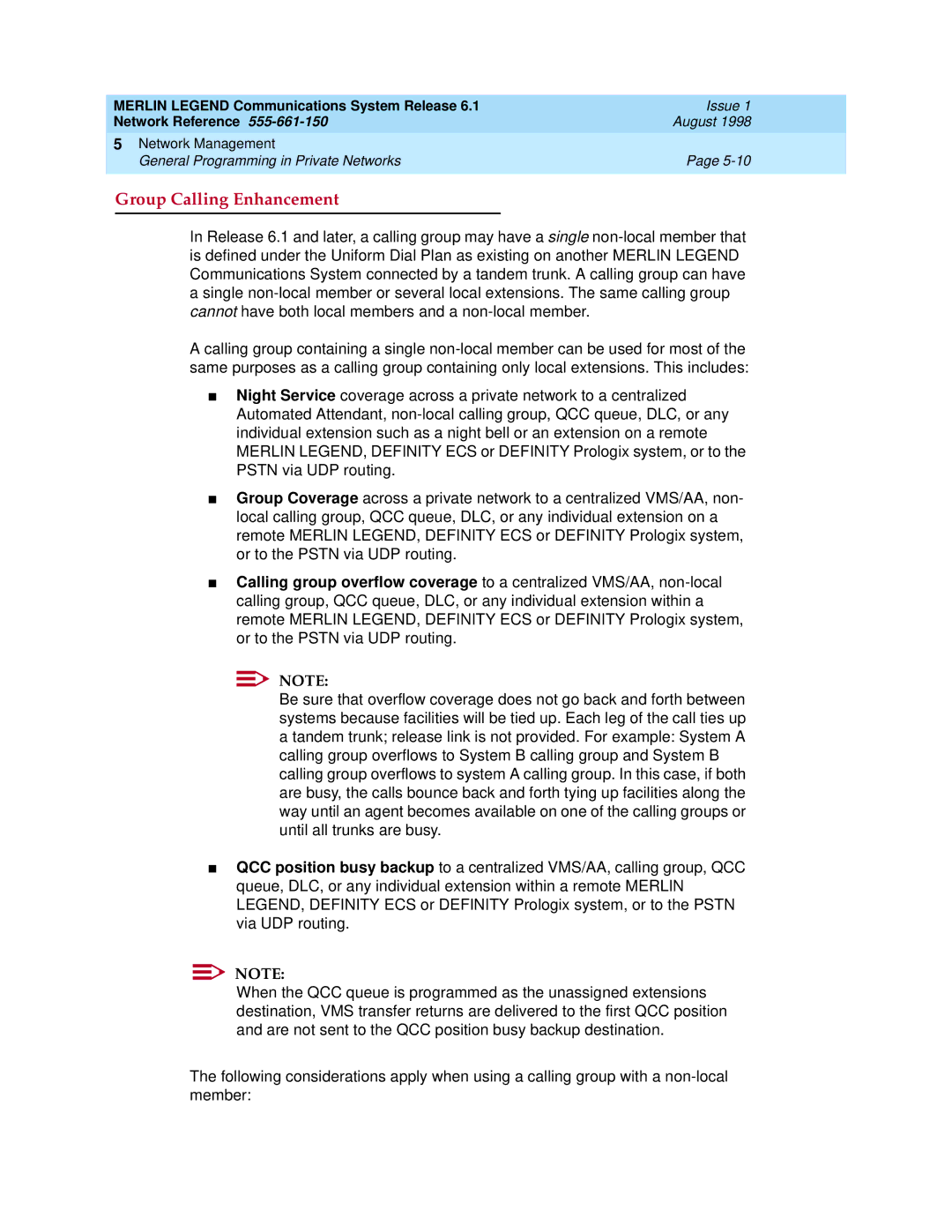
MERLIN LEGEND Communications System Release 6.1 | Issue 1 | |
Network Reference | August 1998 | |
5 Network Management |
| |
| General Programming in Private Networks | Page |
|
|
|
| Group Calling Enhancement | 5 |
|
|
|
In Release 6.1 and later, a calling group may have a single
A calling group containing a single
■
■
Night Service coverage across a private network to a centralized Automated Attendant,
Group Coverage across a private network to a centralized VMS/AA, non- local calling group, QCC queue, DLC, or any individual extension on a remote MERLIN LEGEND, DEFINITY ECS or DEFINITY Prologix system, or to the PSTN via UDP routing.
■
■
Calling group overflow coverage to a centralized VMS/AA,
NOTE:
Be sure that overflow coverage does not go back and forth between systems because facilities will be tied up. Each leg of the call ties up a tandem trunk; release link is not provided. For example: System A calling group overflows to System B calling group and System B calling group overflows to system A calling group. In this case, if both are busy, the calls bounce back and forth tying up facilities along the way until an agent becomes available on one of the calling groups or until all trunks are busy.
QCC position busy backup to a centralized VMS/AA, calling group, QCC queue, DLC, or any individual extension within a remote MERLIN LEGEND, DEFINITY ECS or DEFINITY Prologix system, or to the PSTN via UDP routing.
NOTE:
When the QCC queue is programmed as the unassigned extensions destination, VMS transfer returns are delivered to the first QCC position and are not sent to the QCC position busy backup destination.
The following considerations apply when using a calling group with a
